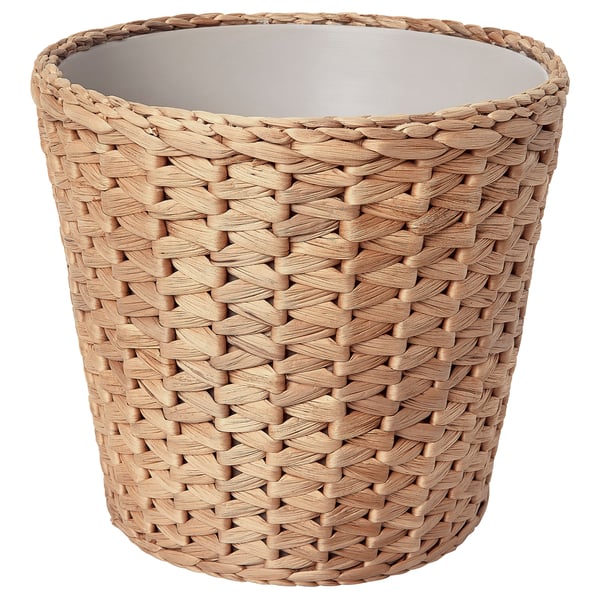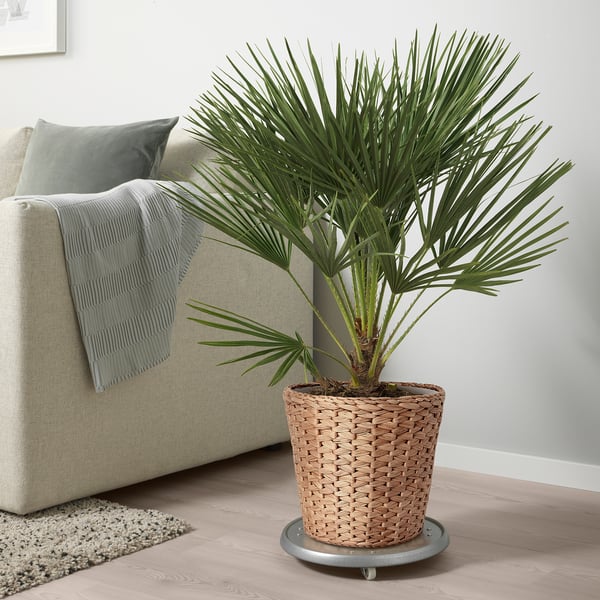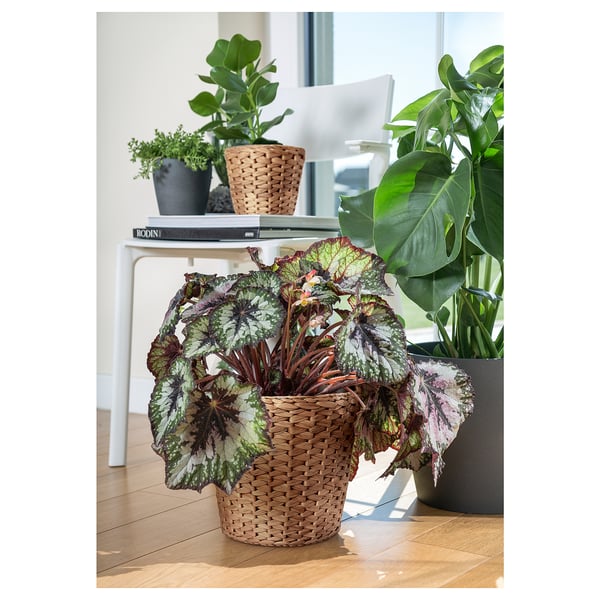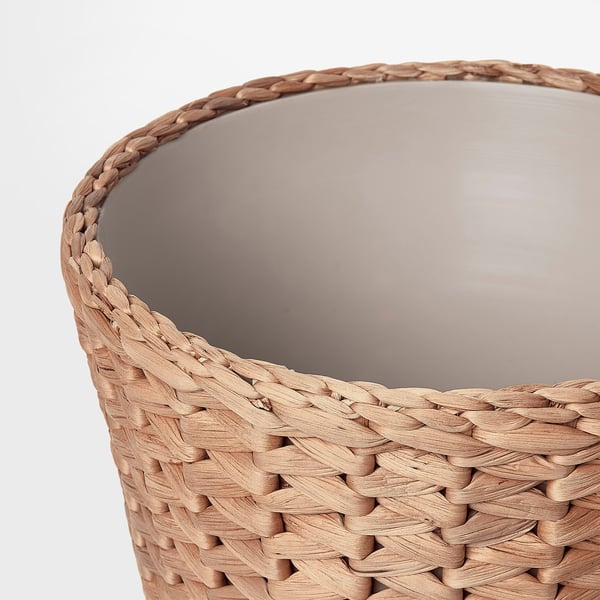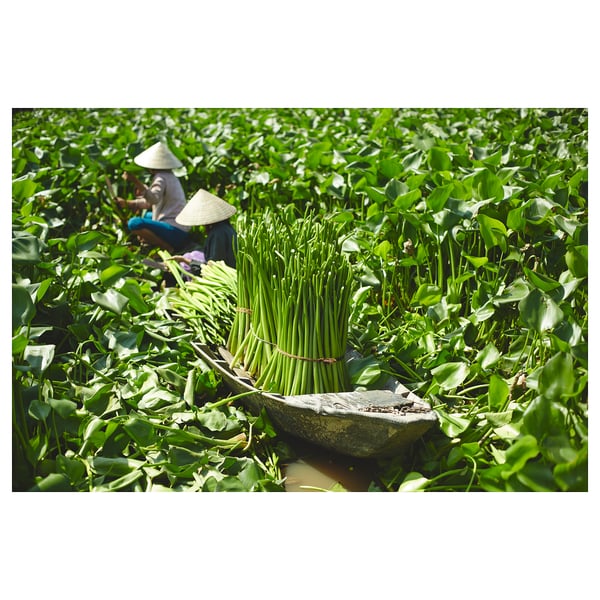FRIDFULL Plant pot, water hyacinth, 24 cm
How to get it
Decorate your home with beautiful objects from nature. This plant pot is handwoven from water hyacinth that is harvested to help keep tropical waterways free and maintain the natural flow of water.
Product details
Skilled craftspeople have woven the plant pot by hand, so each pot is one of a kind.
The material brings a piece of nature into your home and spreads a calm, warm feeling.
This product is made of water hyacinth – a fast-growing tropical plant that is harvested to help keep waterways free and maintain the natural flow of water.
The plant pot has an inner saucer to collect excess water.
Good to know
Each product is a unique, handmade work of art with natural variations in colour and shape.
Only recommended for indoor use.
To prevent surface scratches, complete with TRIXIG stick-on floor protectors, sold separately.
Materials and care
Material
- Pot:
- Water hyacinth, Clear acrylic lacquer
- Inner plant pot:
- Polypropylene plastic
Care
For indoor use
Wipe clean with a damp cloth.
Water hyacinth is happiest in dry, cool environments with an even temperature.
Measurements
- Height: 25 cm
- Outside diameter: 28 cm
- Max. diameter flowerpot: 24 cm
- Inside diameter: 25 cm
Packaging
FRIDFULL
Article number505.134.13- Height: 26 cm
- Weight: 0.56 kg
- Diameter: 29 cm
- Package(s): 1
Reviews
Customer reviews
SustainabilityPeople and planet
Energy and resources
Decorate your home and help keep waterways free!
Water hyacinth is a beautiful and fast growing plant that unfortunately clogs the waterways where it grows. The dried stalks can be used to weave vases, bowls and plant pots. This helps to naturally control its growth and create a better water flow, plus you can decorate your home with beautiful objects made from nature.
Material
What is water hyacinth?
Water hyacinth is a free-floating plant that spreads quickly in tropical waterways. When covering the surface completely, it blocks out sunlight which disrupts biodiversity. Also, local communities suffer as transportation routes are clogged. When harvested, biodiversity is restored and waterways are kept open. The plant itself becomes a resource too. The stalks make a flexible material that can be woven or braided into unique baskets, mats and other home furnishings.
